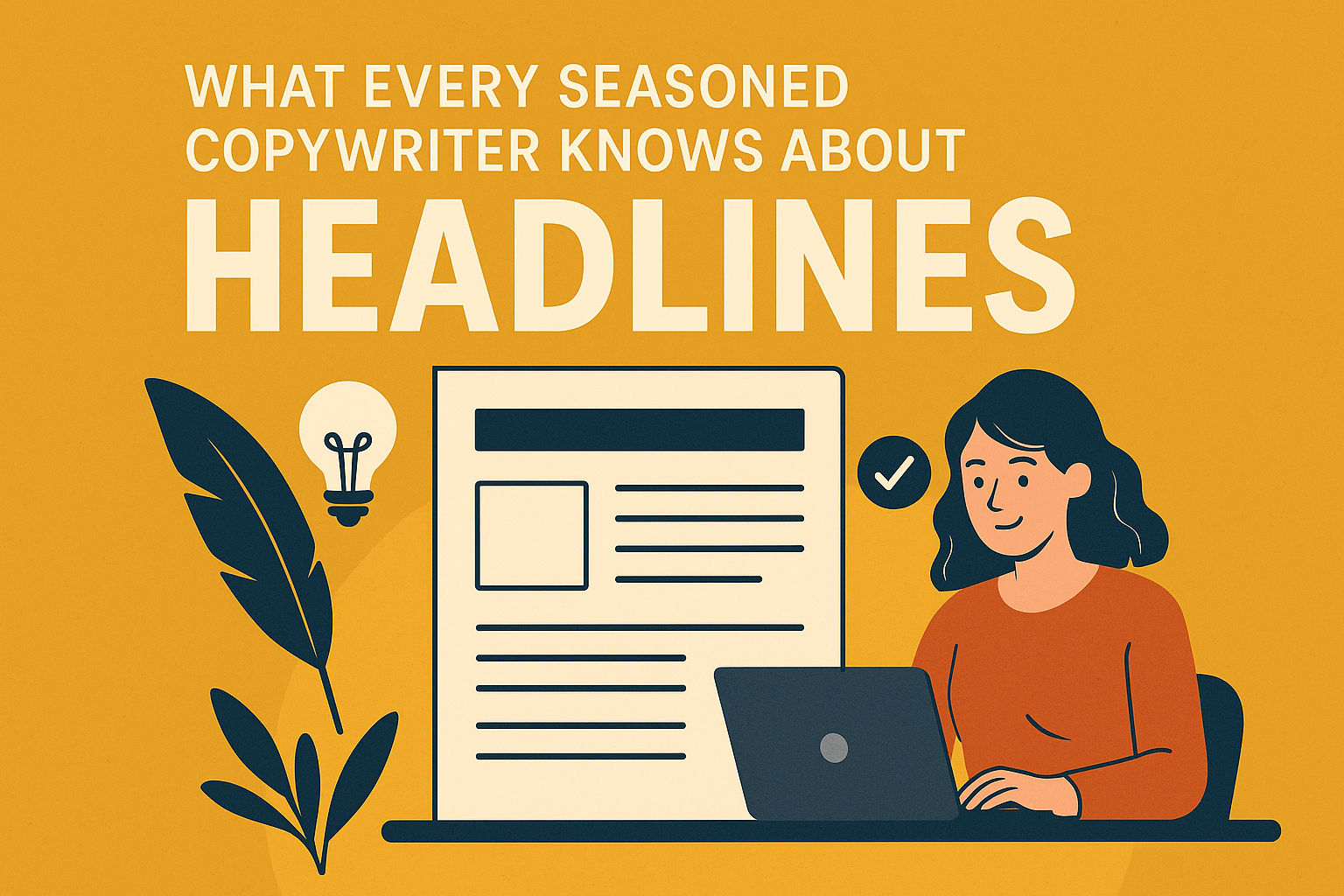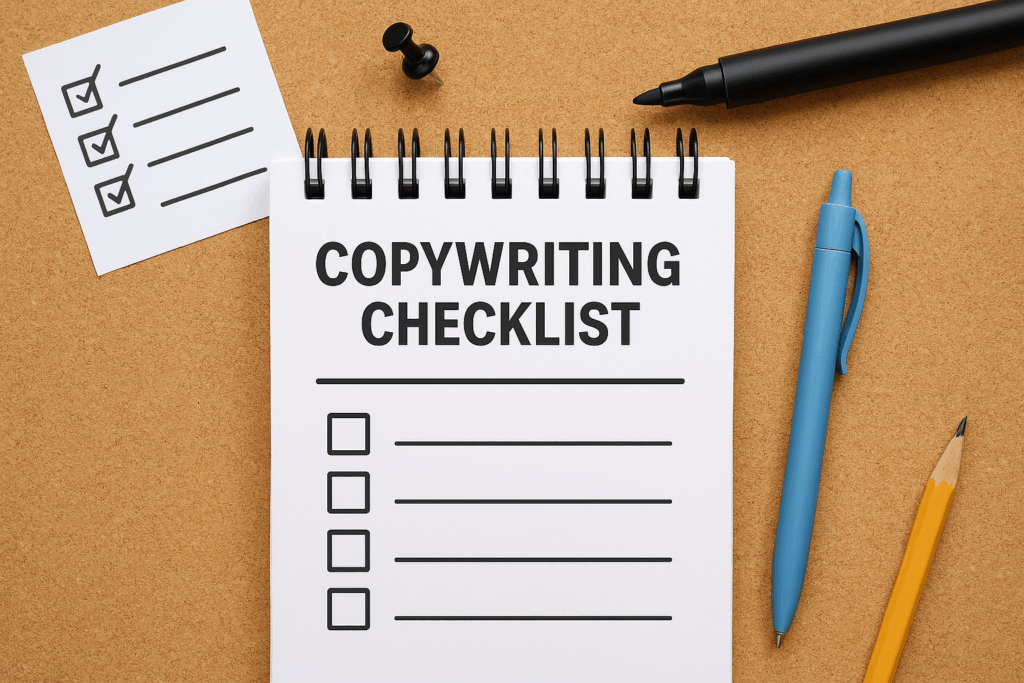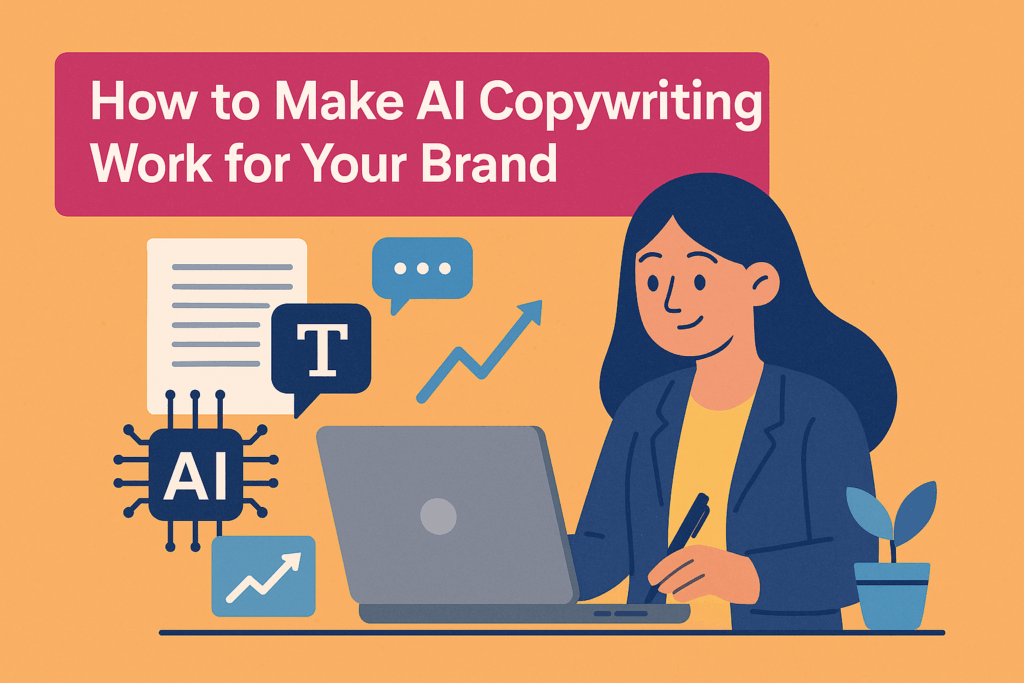In the fast-paced world of digital marketing, your headline is your first impression—and often your last. A weak headline means your offer dies unread. A strong headline, on the other hand, can stop the scroll, spark emotion, and open wallets. But here’s the truth: most business owners write headlines like they’re decorating a cake. Seasoned copywriters? They treat headlines like life-or-death negotiations. Because they are.
This isn’t a surface-level guide. This is a deep dive into the seasoned mindset—the framework professional copywriters apply that separates conversions from crickets. We’ll break down the hidden layers, psychological strategies, and research tactics every serious copywriter masters—things most business owners miss entirely.
1. Seasoned Copywriters Start with Pain—Not Products
If you’ve ever wondered why some ads resonate instantly while yours fall flat, the answer is simple: the best headlines begin with the reader’s pain—not your offer.
Business Owner Mistake:
Most business owners are understandably proud of their product or service. They often write headlines like:
- “Get 30% Off Our New Line of Supplements”
- “Introducing Our Latest App Feature”
But here’s what a seasoned copywriter knows: people don’t buy features. They buy relief from a problem. A headline must signal that relief, fast.
What the Pro Does:
Before a seasoned copywriter types a single word, they spend hours identifying the exact pain points a customer is experiencing. This means:
- Reading reviews on competitors’ products
- Scanning Reddit threads and Quora questions
- Interviewing customers
- Mining support tickets or refund requests
They don’t assume. They research. Because if the headline doesn’t touch a real nerve, it gets ignored.
Example:
Instead of: “New AI Tool for Productivity”
The seasoned version: “Still Drowning in Emails? This AI Tool Handles Replies While You Sleep”
The difference? One headline lists a feature. The other promises freedom from overwhelm—backed by empathy.
2. They Don’t Just Research — They Diagnose Like a Doctor
Imagine going to a doctor who prescribes medicine before listening to your symptoms. You’d walk out. But that’s how many business owners write copy: with a pre-baked message for everyone.
Copywriters dig deeper. Once they identify the pain point, they ask:
- Why does this hurt?
- What beliefs do people hold about the pain?
- What has already failed for them?
- What fears are tied to this problem?
- How urgent is it?
This diagnostic mindset means the copywriter can choose a “treatment”—that is, a headline angle—that fits.
Headline Methodologies from the Pros:
Here’s how seasoned writers treat the same pain point in multiple ways:
Pain Point: The reader feels like they waste time on marketing tasks.
Headline Variants:
- Fear-based: “How Much Time Are You Wasting on Marketing That Doesn’t Work?”
- Aspirational: “What If Your Marketing Could Run Without You?”
- Proof-driven: “How We Cut a Startup’s Marketing Time by 70% in 30 Days”
- Question-based: “Is Your Marketing a Time Suck? Here’s the Fix.”
Same pain. Multiple angles. This kind of strategic testing doesn’t happen without insight and planning.
3. They Understand That Headlines Are 80% of the Work
David Ogilvy, one of the most influential ad men in history, famously said:
“On the average, five times as many people read the headline as read the body copy. When you have written your headline, you have spent eighty cents out of your dollar.”
Most business owners rush this. They brainstorm for five minutes, pick the first headline that “sounds good,” and move on.
Not the pros.
How the Best Do It:
- They write 20–50 variations of a headline.
- They test different headline types (How-to, listicle, question, curiosity, promise, threat).
- They look for the one headline that makes their own pulse race a little faster.
They also lean on formulas, not because they’re lazy—but because proven frameworks allow more mental space for creativity within the lines.
Some of the most enduring headline formulas:
- “How to [Achieve X] Without [Pain Y]”
- “The Secret to [Desire] That [Social Proof]”
- “What [Group] Need to Know About [Big Risk]”
- “Why [Popular Belief] Is Dead Wrong About [Topic]”
These aren’t gimmicks—they’re tested psychological triggers.
4. They Obsess Over Clarity and Specificity
A headline must be understood in three seconds. Confuse the reader, and you lose them. Vague headlines are copy-killers.
Business Owner Mistake:
“Grow Your Business Faster”
What does that mean? How much faster? What kind of business? Who is this for?
Seasoned Upgrade:
“Double Your Coaching Leads in 30 Days—Without Posting on Social Daily”
This headline works because it:
- Specifies a time frame (30 days)
- Targets a group (coaches)
- Tackles a known objection (posting daily)
Copywriters obsess over clarity because they know clarity converts.
5. They Match the Awareness Stage
Every reader is on a spectrum of awareness. Eugene Schwartz outlined this in his book Breakthrough Advertising:
- Most Aware – Knows your product and wants the deal.
- Product Aware – Knows the product but unsure if it’s right.
- Solution Aware – Knows solutions exist but not yours.
- Problem Aware – Feels the pain but hasn’t sought solutions.
- Completely Unaware – Doesn’t know they have a problem.
Business Owner Mistake:
Using salesy “Buy Now!” headlines for cold audiences.
Copywriter’s Strategy:
Crafting headlines that meet the reader where they are.
Example for a problem-aware reader:
“Why You’re Exhausted After Work—And What Burnout Experts Say You Should Do First”
This is a “soft open”—it invites the unaware or skeptical into the conversation without pressure. It works better for cold traffic. On the other hand, a retargeting ad might use:
“Try BurnoutFix Pro—Used by 1,200+ Professionals to Reclaim Their Evenings”
Same product. Different headline, based on awareness.
6. They Pressure Test with Real People
Seasoned writers don’t live in a vacuum. They test headlines in Facebook groups, newsletters, and Slack channels. They even run A/B tests or cold emails to see which version gets more opens or clicks.
Meanwhile, many business owners launch blindly—publishing based on gut instinct, not data.
Pro Copywriters Know:
- “I like it” isn’t a valid metric.
- “It converts” is.
Sometimes, a headline you hate will outperform the one you love. Ego is the enemy of effectiveness.
7. They Emotionally Pre-Qualify the Reader
A seasoned headline doesn’t just inform—it primes emotion. Copywriters ask:
- Will this make the reader feel seen?
- Will it trigger fear, desire, outrage, curiosity, pride, relief?
- Will it spark an internal YES?
This is emotional filtering. The best headlines subtly qualify the reader through resonance. If you’re not feeling something as you read it, the reader won’t either.
Compare:
❌ “A Guide to Financial Planning”
✅ “Still Feel Broke Despite Earning More? This Financial Plan Fixes the Gap”
The latter doesn’t just say what the guide is—it speaks to a frustration and offers a solution.
8. They View Headlines as Gateways, Not Decorations
Here’s a mindset shift that changes everything:
“A headline’s job is not to summarize the content. It’s to get the first sentence read.”
This means a great headline should spark just enough tension, curiosity, or urgency to push the reader into the next line. That’s it.
Seasoned copywriters don’t reveal everything upfront. They open loops. They provoke questions. They create momentum.
Techniques:
- Use a shocking stat: “92% of Entrepreneurs Miss This Simple Sales Trigger”
- Start a story: “I Almost Quit My Business—Until This One Sentence Saved It”
- Pose a dilemma: “Would You Fire Your Best Friend If It Meant Doubling Revenue?”
The key is emotional propulsion—writing a headline that propels the reader forward.
Conclusion: Why Most Business Owners Miss This
Most business owners think writing a headline is an afterthought. Something you “whip up” once the real work is done.
Seasoned copywriters know it’s the tip of the spear.
They research like journalists. They strategize like chess players. They test like scientists. And they write like poets who studied psychology.
TL;DR – What Sets the Pros Apart:
- Deep research into customer pain points
- Strategic use of multiple headline frameworks
- Emphasis on clarity, specificity, and emotional targeting
- Matching message to reader awareness
- Relentless testing and iteration
So if you’re a business owner and you’re not seeing conversions… maybe it’s not your offer. Maybe it’s your headline.
And maybe it’s time to stop guessing—and start thinking like a seasoned copywriter.


